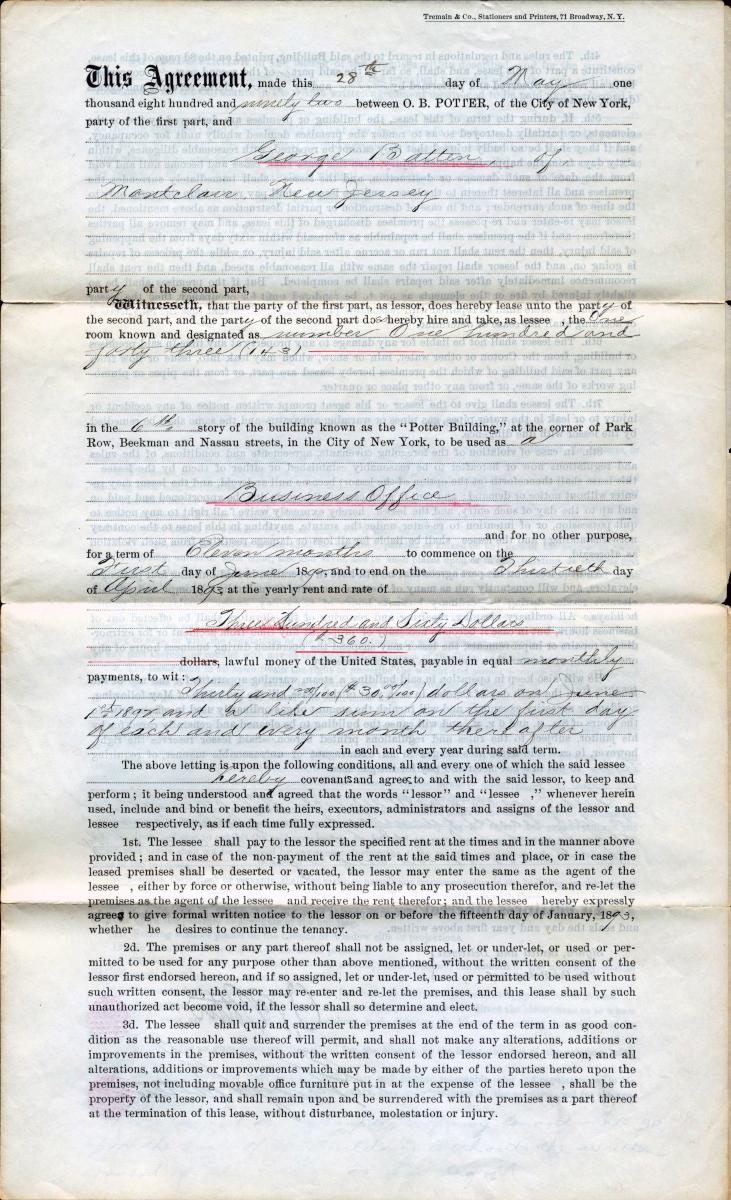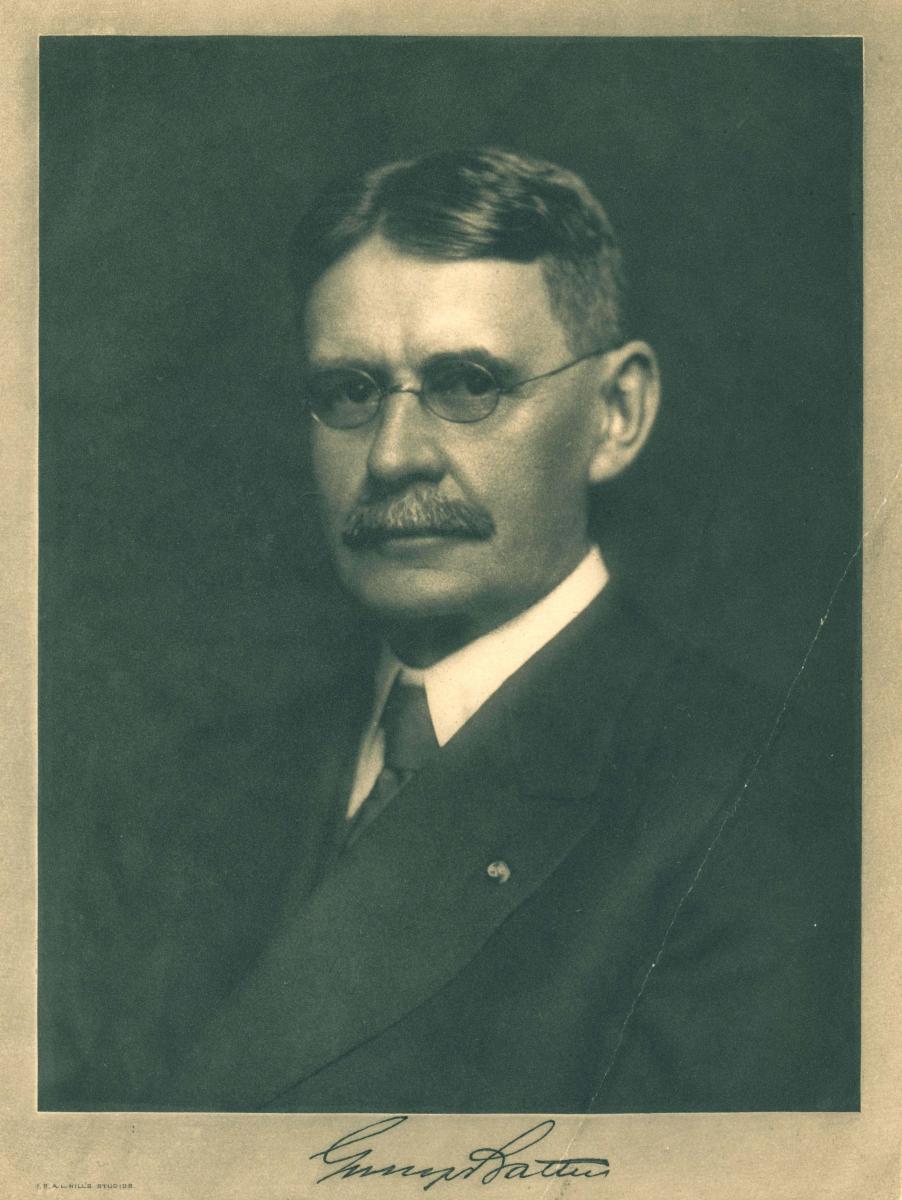“Said lessee shall replace all glass broken in said leased premises during the term of this lease unless the same is caused by the lessor or his employees.” This clause on a lease makes me wonder what had transpired prior for Orlando B. Potter to handwrite this addition in a lease for space in the Potter Building in the Financial District of Manhattan. Despite this seemingly odd clause, George Batten signed the lease on May 28, 1892, for office space on the sixth floor, room 143. It marks the first lease for office space for the George Batten Company.

The George Batten Company was formed in 1891 as a general advertising business. The only other employee was Margaret Hopkins, who remained with the company until at least Batten’s death in 1918. According to Hopkins, the company initially had one small room at 38 Park Row, “equipped with two desks, a typewriting machine, files for about twenty-five papers, a copy of Ayer’s Directory, and a dictionary.” In the early years, Batten insisted on writing the advertisements himself, being a stickler for just the right word. He “brought dignity to his work and was instrumental in making the business of advertising a profession to which men became proud to say that they belonged.” However, it would not be long until the company and Batten needed to rely on the work of others.

William H. Johns joined the company immediately after graduating from college in 1892. Following Batten’s death, he was elected president of the company and remained for many years, helping to oversee the merger with Barton, Durstine, and Osborn in 1928. Johns was appointed by President Woodrow Wilson as the chairman of the Division of Advertising. In that role, he oversaw all the publicity work to promote liberty loans, the Red Cross, YMCA, Salvation Army, Knights of Columbus, Jewish Relief Fund, and others. It was in cleaning his desk in 1937 that Johns found the original 1892 lease, seen above.
The company remained in the Potter Building until January 1906, when it moved to the eleventh floor of the Metropolitan Annex Building, near Madison Square. By this time, the George Batten Company had grown significantly. Employees totaled nearly fifty, and an annual expense account went from $1,500 to $75,000. What did remain the same – including retaining the first account secured with Macbeth’s Lamp Chimneys – was the core belief of “we do not care to be responsible for advertisements that cannot be read aloud in our own home.” Sticking by this belief meant declining a $50,000 order two years in a row. The company adopted two slogans expressive of their business principles – one, “we go anywhere for business,” the other, no less important, “there is a lot of business that we do not want.”
On September 15, 1928, the George Batten Company merged with Barton, Durstine, and Osborn, to create what we now know as Batten, Barton, Durstine, and Osborn, Inc. (BBDO). As a memo from the time describes, although they were in the same business and competitors, “practically all of their accounts are of different lines and different industries. What is more natural then that [they] should link hands for greater service and mutual strength?” In the nearly 100 years since the merger, BBDO continues to be a leader in the advertising business worldwide.
Ashley Williams is the project archivist for the BBDO collection at the Hagley Museum and Library.
